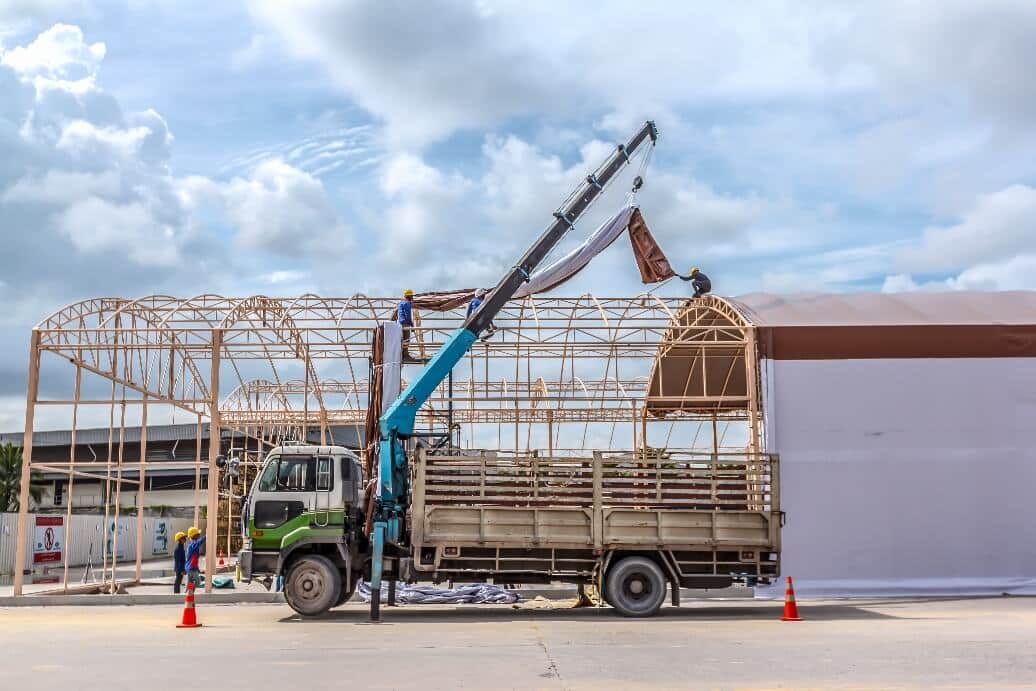5 Things To Look For In A Tension Fabric Building For Construction Site Use
Modern inventions are transforming how things are done in practically every industry.
Fabric buildings have gained popularity over the years because they are more efficient and cost-effective to construct than brick-and-mortar structures.
These structures are primarily utilized for industrial and commercial purposes. They can, however, be used for residential purposes as well. But before you go for a tension fabric building, here are some things you should consider:
1. Material Strength and Quality
Tension fabric buildings can be used as a replacement for traditional building structures. Therefore, if you’re going to build a tension fabric building structure, you’d expect that it provides the same level of protection from the elements and reliability.
By using suitable materials, you can build a structurally sound and sturdy structure. However, this all comes down to the quality of the building materials used.
Higher-quality materials will result in more durable construction, but low-quality materials may cause excessive buckling and flexing, causing the structure to deteriorate faster.
So, it’s crucial to consider the quality of materials when dealing with tension fabric buildings. Galvanized steel is the standard framing material for tension fabric constructions.
2. Energy and Cost-Efficiency
There are costs associated with erecting and maintaining a fabric structure. The reason why most businesses are opting for these building designs is that they use affordable materials. Another reason is that these structures tend to be quite energy efficient.
Tension fabric buildings have a PVC fabric membrane that assists with insulation and UV protection. They also reduce the need for heating and cooling systems, which results in significant long-term cost savings.
Even if you use an HVAC system, it will still run more efficiently because these buildings are designed to prevent air leakage.
Furthermore, tension fabric building structures are made from eco-friendly materials, making them a fantastic alternative for environmentally conscious enterprises or organizations. Thus, always consider the energy efficiency of tension fabric buildings.
Read Also: Role of Engineers in Project Management
3. Building Design
An eye test may not be enough to determine the strength of fabric constructions. On the surface, they may appear not strong enough to survive adverse weather conditions.
But that’s not the case. Fabric constructions are resilient to adverse weather conditions due to their flowing design. The foundation, skeleton, and fabric all work together to build a strong and functional structure ideal for construction sites.
While fabric constructions are less expensive than brick-and-mortar structures, they nevertheless demand a significant financial investment, depending on the size of the structure. Like other buildings, the bigger the project, the greater the financial investment.
Therefore, you can’t afford to make mistakes in the building process (i.e., from the foundation to the design of the actual fabric structure), or your financial investment will be wasted.
The structure should endure the elements, and much of the design will be governed by local building codes. However, structural designs are created in-house or by suppliers. So, look for companies that use high-quality materials and have good designs.
4. Local Building Codes
Before constructing a fabric building, it’s important to note that various building codes should be considered when building it.
Locations may have different codes that mustbe followed. Local construction codes specify the minimum requirements for snow, earthquake, and wind forces that the building must withstand.
In general, the building codes will be determined by the weather patterns at the construction site.
It is in your best interest to follow these guidelines. Failure to adhere to these codes may result in building collapse because the structure will lack the structural integrity to survive specific weather occurrences such as heavy snow or an earthquake.
So, when looking for a tension fabric building for construction site use, ensure you know the building codes in your area. Remember, pre-fabricated buildings may be tempting, but they aren’t always the best choice.
Follow the building codes if you want your construction to withstand weather elements.
5. Adjustability
Many industries and businesses use fabric structures for storage, production, and manufacturing, among other things.
Fortunately, modern fabric structures are adaptable, so you can customize them for use in various settings.
Ideally, it would be good to opt for a tension fabric structure for different purposes. Even if you want to utilize your building for a specific purpose, an adaptable structure gives you more alternatives.
You can modify that space to do whatever you want at the time. Hence, tension fabric buildings are a fantastic option for establishing a construction site with several functions.
Conclusion
Tension fabric structures are a great alternative to traditional building premises. Technology advancements have made these structures more energy and cost-efficient, making them a perfect choice for various businesses.
Besides, you can customize them based on how you want to use them. However, if you’re investing in tension fabric building, you must select high-quality materials so the structure will last.
Moreover, try to partner with reputable suppliers who can provide custom designs to meet your needs.
